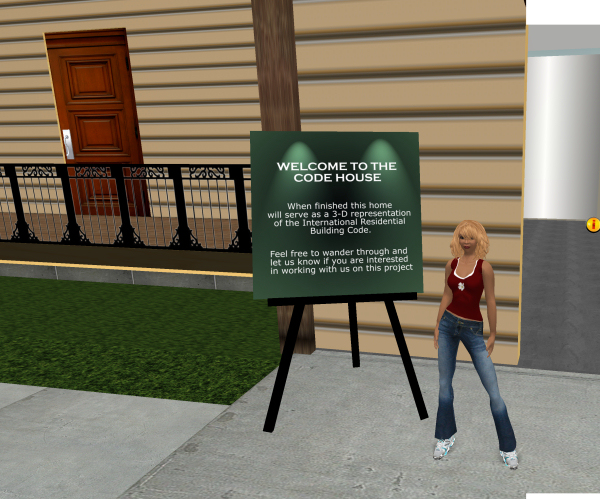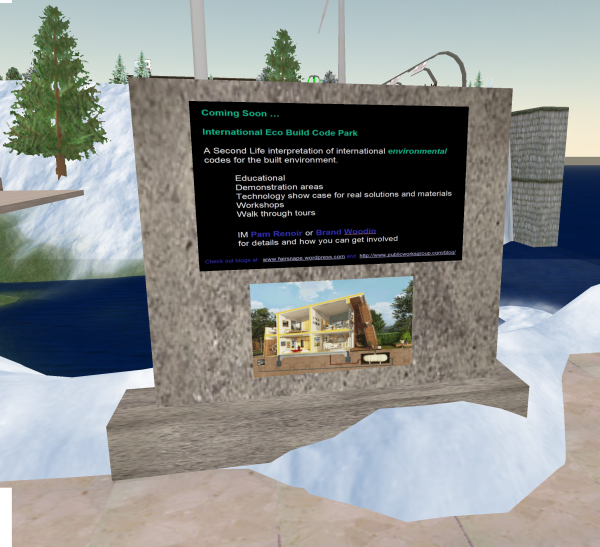Because I initially joined Second Life as a means of promoting the awesome community that I live and work in, my primary focus was always to find displays or builds that would help our city reach out to the community. One of the ideas I had thought about implementing was a “Code House” – a building in which the the International Residential Building Code could be shown in 3-D.
As the city’s building inspector I discovered that many builders and homeowners do not have the time, the patience, or the motivation to sit down and read the code book. I do think that the code council has done the best job possible in setting up the book and presenting the information, but let’s face it, few people want to sit down and read a book of regulations. So I have often wondered how to best convey the information in the code book in an easy and simple way that will engage everyone’s interest.
I believe that the Second Life environment provides the opportunity to create a presentation that will show the code requirements in a simple and intuitive manner. If I need to find out the height at which to install switches or receptacles, I simply walk into the house and the dimension is shown on the wall. If I need to show the width of a doorway, I put phantom text hanging in the doorway space. How much simpler can it be?

Well, I started building the house but have to admit that it has been slow going – too much to accomplish in Second Life and that darn real life thing (such as my real job) keeps me from hanging out in SL as much as I would like. So I was happy to find a kindred spirit in the avatar of Brand Woodin. Brand, who is from England, had been considering the same type of idea but of course, wanted to build a home that would convey the English code. So we thought, how cool is that to have homes built to teach codes from different countries.
Last night we discussed the project some more and came up with some fun and interesting side projects like creating a kit to wire a light switch where someone in SL could get the kit and practice actually wiring it as they would in real life. The completed wiring job would work (turn the light on) only if wired correctly. Otherwise maybe it would blow up or something cool like that. Well, now we need a good scripter to help us implement that idea.

Anyway, the home I am working on is located on the Public Works sim for now. Brand will be building his “across the street” from mine. English and American. Now if only we can find others from different countries who are interested in creating homes to reflect their codes. There is so much that can be illustrated and accomplished, so if anyone is interested in joining in with us to implement this project or create related projects, we would love to have you join in and become part of our team.

